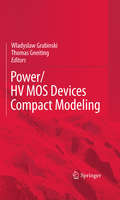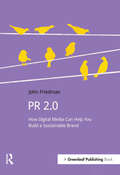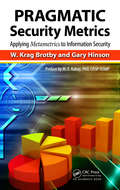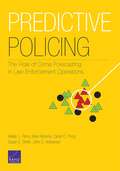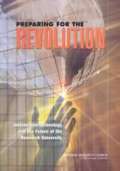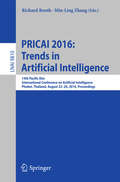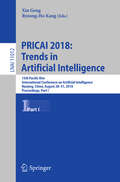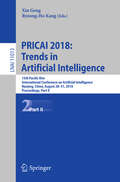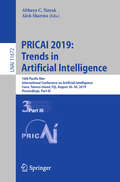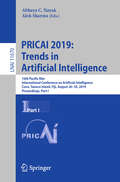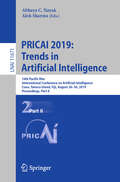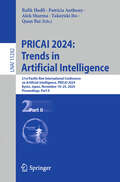- Table View
- List View
POKéMON GO COME RISPARMIARE SULLA BATTERIA +8 CONSIGLI E TRUCCHI CHE DEVI LEGGERE
by Game Guidez Vincenzo LantinoPosso insegnarvi a RADDOPPIARE la vita della vostra batteria o anche di più! Nella nostra guida ci dedichiamo subito ai consigli ed ai trucchetti che vi aiuteranno ad allungare la vita della vostra batteria nel minor tempo possibile. Vi guidiamo passo-passo con alcuni dei trucchi più ambiti che abbiamo scoperto sul risparmio della vostra preziosa batteria. Se volete divertirvi di più, MOLTO DI PIÙ, questo è il libro che fa per voi! Tratteremo vari argomenti come: il drenaggio della batteria ad opera del sonoro, applicazioni in background, come raddoppiare instantaneamente la durata della vostra batteria, diminuire il consumo di batteria passo-passo, opzioni avanzate del bluetooth, manipolazione del piano dei dati d'internet, opzioni magiche del gioco e giocare a basso costo energetico. Se non avete voglia di leggere fandonie e volete andare al sodo, questo è il miglior libro che potreste desiderare! Prendete oggi la vostra copia e diventate il maestro di Pokémon che sapete di essere!
POWER/HVMOS Devices Compact Modeling
by Thomas Gneiting Wladyslaw GrabinskiSemiconductor power electronics plays a dominant role due its increased efficiency and high reliability in various domains including the medium and high electrical drives, automotive and aircraft applications, electrical power conversion, etc. Power/HVMOS Devices Compact Modeling will cover very extensive range of topics related to the development and characterization power/high voltage (HV) semiconductor technologies as well as modeling and simulations of the power/HV devices and smart power integrated circuits (ICs). Emphasis is placed on the practical applications of the advanced semiconductor technologies and the device level compact/spice modeling. This book is intended to provide reference information by selected, leading authorities in their domain of expertise. They are representing both academia and industry. All of them have been chosen because of their intimate knowledge of their subjects as well as their ability to present them in an easily understandable manner.
PR 2.0: How Digital Media Can Help You Build a Sustainable Brand (Doshorts Ser.)
by John FriedmanDigital media offer many of the same characteristics – immediacy, transparency and interactivity – that make one-to-one the most effective form of communication. And yet many organizations do not fully embrace them. They simultaneously underestimate and fear the power of digital communications. And yet these tools, when used strategically, can be an effective part of your communications plan.PR 2.0 will help you: 1. understand how the increasing emphasis on transparency driven by corporate responsibility has changed the ways that effective organizations communicate with their stakeholders; 2. develop a communications plan for your organization that reaches, and engages, the right stakeholders, using the most appropriate tools and channels; 3. demonstrate the value and “sell” the use of digital media to skeptical internal stakeholders, including in the c-suite, as part of your mission-advancing communications plan. You can make the most of the irrevocable changes in the way people create, share, receive, judge and interact with information. This book offers real-world examples and practical tools to help your organization to live its values and effectively engage with those most essential to your success.
PR im Social Web (O'Reillys Basics)
by Marie-Christine Schindler Tapio LillerInteressante Zeiten für Kommunikationsprofis: Mit dem Erstarken des Social Web verändert sich das Verhältnis zwischen Unternehmen bzw. Agenturen und ihren Dialoggruppen - Transparenz und Austausch werden immer wichtiger. PR im Social Web zeigt, was das für die PR-Arbeit bedeutet. Die Autoren, selbst erfahrene PR-Profis, erläutern die veränderten Rahmenbedingungen und erklären, wie die einzelnen PR-Disziplinen und Unternehmensbereiche von Social Media profitieren können. Zahlreiche Fallstudien, Tipps und Checklisten erleichtern es Ihnen, das Gelesene auf Ihre eigenen Kommunikationsziele anzuwenden. Für die zweite Auflage wurde das Buch komplett aktualisiert und um Kapitel zu Nonprofit-PR und Erfolgsmessung ergänzt. Von der Medienarbeit bis zur Krisenkommunikation Die Medienarbeit wird durch Aktivitäten im Social Web bereichert - Blogger Relations, Monitoring, Issues Management und der Umgang mit Kritik und Krisen sind nur einige wichtige Stichworte. Corporate Publishing und Events Corporate Blogs und Podcasts bieten interessante Publikations- und Dialogmöglichkeiten, und Events erhalten über soziale Netzwerke und Livestreams eine deutlich größere Öffentlichkeit. Personalmarketing und Interne Kommunikation Vom Employer Branding über Recruiting bis zum Einsatz von Social Media im Unternehmen selbst - für die HR-Kommunikation bietet sich das Social Web mit seinen Dialogmöglichkeiten geradezu an. Kundenservice und Support Keine klassischen PR-Disziplinen, doch auch Kundenservice und Support werden durch die Social Media erheblich persönlicher und können so viel Positives zur öffentlichen Wahrnehmung eines Unternehmens beitragen. Wie sich der PR-Beruf ändert Vieles ist im Umbruch, davon sind auch die Aufgabenverteilung zwischen Unternehmen und Agenturen sowie das Berufsbild des PR-Profis selbst betroffen. NEU: Messbarkeit im Social Web: von KPI bis ROI Zahlt sich Social Media-PR überhaupt aus? Auch wenn es bei der Kommunikation im Social Web nicht vorrangig um harte Zahlen geht - strategisch geplant und durchgeführt, lassen sich ihre Erfolge durchaus überprüfen. Der Rechtsrahmen In einem Gastkapitel erläutert Rechtsanwalt Henning Krieg, was bei der Kommunikation im Social Web zu beachten ist - ob bei der Verbreitung von Content oder der Definition von Social Media Guidelines.
PRAGMATIC Security Metrics: Applying Metametrics to Information Security
by W. Krag Brotby Gary HinsonOther books on information security metrics discuss number theory and statistics in academic terms. Light on mathematics and heavy on utility, PRAGMATIC Security Metrics: Applying Metametrics to Information Security breaks the mold. This is the ultimate how-to-do-it guide for security metrics.Packed with time-saving tips, the book offers easy-to-fo
PREDICTIVE POLICING: The Role of Crime Forecasting in Law Enforcement Operations
by Walter L. Perry Brian Mcinnis Carter C. Price Susan C. Smith John S. HollywoodPredictive policing is the use of analytical techniques to identify targets for police intervention with the goal of preventing crime, solving past crimes, or identifying potential offenders and victims. These tools are not a substitute for integrated approaches to policing, nor are they a crystal ball. This guide assesses some of the most promising technical tools and tactical approaches for acting on predictions in an effective way.
PREPARING FOR THE REVOLUTION: Information Technology and the Future of the Research University
by National Research Council of the National AcademiesThe rapid evolution of information technology (IT) is transforming our society and its institutions. For the most knowledge-intensive entities of all, research universities, profound IT-related challenges and opportunities will emerge in the next decade or so. Yet, there is a sense that some of the most significant issues are not well understood by academic administrators, faculty, and those who support or depend on the institution’s activities. This study identifies those information technologies likely to evolve in the near term (a decade or less) that could ultimately have a major impact on the research university. It also examines the possible implications of these technologies for the research university—its activities (learning, research, outreach) and its organization, management, and financing—and for the broader higher education enterprise. The authoring committee urges research universities and their constituents to develop new strategies to ensure that they survive and thrive in the digital age.
PREPARING FOR THE REVOLUTION: Information Technology and the Future of the Research University
by Panel on the Impact of Information Technology on the Future of the Research UniversityThe rapid evolution of information technology (IT) is transforming our society and its institutions. For the most knowledge-intensive entities of all, research universities, profound IT-related challenges and opportunities will emerge in the next decade or so. Yet, there is a sense that some of the most significant issues are not well understood by academic administrators, faculty, and those who support or depend on the institution’s activities. This study identifies those information technologies likely to evolve in the near term (a decade or less) that could ultimately have a major impact on the research university. It also examines the possible implications of these technologies for the research university—its activities (learning, research, outreach) and its organization, management, and financing—and for the broader higher education enterprise. The authoring committee urges research universities and their constituents to develop new strategies to ensure that they survive and thrive in the digital age.
PRICAI 2016: Trends in Artificial Intelligence
by Richard Booth Min-Ling ZhangThis book constitutes the refereed proceedings of the 14th Pacific Rim Conference on Artificial Intelligence, PRICAI 2016, held in Phuket, Thailand, in August 2016. The 53 regular papers and 15 short papers presented in this volume were carefully reviewed and selected from 161 submissions. Pricai covers a wide range of topics such as AI foundations; applications of AI; semantic web; information retrieval; constraint satisfaction; multimodal interaction; knowledge representation; social networks; ad-hoc networks; algorithms; software architecture; machine learning; and smart modeling and simulation.
PRICAI 2018: 15th Pacific Rim International Conference on Artificial Intelligence, Nanjing, China, August 28–31, 2018, Proceedings, Part I (Lecture Notes in Computer Science #11012)
by Xin Geng Byeong-Ho KangThis two-volume set, LNAI 11012 and 11013, constitutes the thoroughly refereed proceedings of the 15th Pacific Rim Conference on Artificial Intelligence, PRICAI 2018, held in Nanjing, China, in August 2018.The 82 full papers and 58 short papers presented in these volumes were carefully reviewed and selected from 382 submissions. PRICAI covers a wide range of topics such as AI theories, technologies and their applications in the areas of social and economic importance for countries in the Pacific Rim.
PRICAI 2018: 15th Pacific Rim International Conference on Artificial Intelligence, Nanjing, China, August 28–31, 2018, Proceedings, Part II (Lecture Notes in Computer Science #11013)
by Xin Geng Byeong-Ho KangThis two-volume set, LNAI 11012 and 11013, constitutes the thoroughly refereed proceedings of the 15th Pacific Rim Conference on Artificial Intelligence, PRICAI 2018, held in Nanjing, China, in August 2018.The 82 full papers and 58 short papers presented in these volumes were carefully reviewed and selected from 382 submissions. PRICAI covers a wide range of topics such as AI theories, technologies and their applications in the areas of social and economic importance for countries in the Pacific Rim.
PRICAI 2019: 16th Pacific Rim International Conference on Artificial Intelligence, Cuvu, Yanuca Island, Fiji, August 26-30, 2019, Proceedings, Part III (Lecture Notes in Computer Science #11672)
by Abhaya C. Nayak Alok SharmaThis three-volume set LNAI 11670, LNAI 11671, and LNAI 11672 constitutes the thoroughly refereed proceedings of the 16th Pacific Rim Conference on Artificial Intelligence, PRICAI 2019, held in Cuvu, Yanuca Island, Fiji, in August 2019.The 111 full papers and 13 short papers presented in these volumes were carefully reviewed and selected from 265 submissions. PRICAI covers a wide range of topics such as AI theories, technologies and their applications in the areas of social and economic importance for countries in the Pacific Rim.
PRICAI 2019: 16th Pacific Rim International Conference on Artificial Intelligence, Cuvu, Yanuca Island, Fiji, August 26–30, 2019, Proceedings, Part I (Lecture Notes in Computer Science #11670)
by Abhaya C. Nayak Alok SharmaThis three-volume set, LNAI 11670, LNAI 11671, and LNAI 11672 constitutes the thoroughly refereed proceedings of the 16th Pacific Rim Conference on Artificial Intelligence, PRICAI 2019, held in Cuvu, Yanuca Island, Fiji, in August 2019.The 111 full papers and 13 short papers presented in these volumes were carefully reviewed and selected from 265 submissions. PRICAI covers a wide range of topics such as AI theories, technologies and their applications in the areas of social and economic importance for countries in the Pacific Rim.
PRICAI 2019: 16th Pacific Rim International Conference on Artificial Intelligence, Cuvu, Yanuca Island, Fiji, August 26–30, 2019, Proceedings, Part II (Lecture Notes in Computer Science #11671)
by Abhaya C. Nayak Alok SharmaThis three-volume set, LNAI 11670, LNAI 11671, and LNAI 11672 constitutes the thoroughly refereed proceedings of the 16th Pacific Rim Conference on Artificial Intelligence, PRICAI 2019, held in Cuvu, Yanuca Island, Fiji, in August 2019.The 111 full papers and 13 short papers presented in these volumes were carefully reviewed and selected from 265 submissions. PRICAI covers a wide range of topics such as AI theories, technologies and their applications in the areas of social and economic importance for countries in the Pacific Rim.
PRICAI 2021: 18th Pacific Rim International Conference on Artificial Intelligence, PRICAI 2021, Hanoi, Vietnam, November 8–12, 2021, Proceedings, Part I (Lecture Notes in Computer Science #13031)
by Fenrong Liu Guido Governatori Thanaruk Theeramunkong Duc Nghia PhamThis three-volume set, LNAI 13031, LNAI 13032, and LNAI 13033 constitutes the thoroughly refereed proceedings of the 18th Pacific Rim Conference on Artificial Intelligence, PRICAI 2021, held in Hanoi, Vietnam, in November 2021.The 93 full papers and 28 short papers presented in these volumes were carefully reviewed and selected from 382 submissions. PRICAI covers a wide range of topics in the areas of social and economic importance for countries in the Pacific Rim: artificial intelligence, machine learning, natural language processing, knowledge representation and reasoning, planning and scheduling, computer vision, distributed artificial intelligence, search methodologies, etc. Part I includes the following topical headings: AI Foundations / Decision Theory, Applications of AI, Data Mining and Knowledge Discovery, Evolutionary Computation / Optimisation, Knowledge Representation and Reasoning.
PRICAI 2021: 18th Pacific Rim International Conference on Artificial Intelligence, PRICAI 2021, Hanoi, Vietnam, November 8–12, 2021, Proceedings, Part II (Lecture Notes in Computer Science #13032)
by Fenrong Liu Guido Governatori Thanaruk Theeramunkong Duc Nghia PhamThis three-volume set, LNAI 13031, LNAI 13032, and LNAI 13033 constitutes the thoroughly refereed proceedings of the 18th Pacific Rim Conference on Artificial Intelligence, PRICAI 2021, held in Hanoi, Vietnam, in November 2021.The 93 full papers and 28 short papers presented in these volumes were carefully reviewed and selected from 382 submissions. PRICAI covers a wide range of topics in the areas of social and economic importance for countries in the Pacific Rim: artificial intelligence, machine learning, natural language processing, knowledge representation and reasoning, planning and scheduling, computer vision, distributed artificial intelligence, search methodologies, etc. Part II includes two thematic blocks: Natural Language Processing, followed by Neural Networks and Deep Learning.
PRICAI 2021: 18th Pacific Rim International Conference on Artificial Intelligence, PRICAI 2021, Hanoi, Vietnam, November 8–12, 2021, Proceedings, Part III (Lecture Notes in Computer Science #13033)
by Fenrong Liu Guido Governatori Thanaruk Theeramunkong Duc Nghia PhamThis three-volume set, LNAI 13031, LNAI 13032, and LNAI 13033 constitutes the thoroughly refereed proceedings of the 18th Pacific Rim Conference on Artificial Intelligence, PRICAI 2021, held in Hanoi, Vietnam, in November 2021.The 93 full papers and 28 short papers presented in these volumes were carefully reviewed and selected from 382 submissions. PRICAI covers a wide range of topics in the areas of social and economic importance for countries in the Pacific Rim: artificial intelligence, machine learning, natural language processing, knowledge representation and reasoning, planning and scheduling, computer vision, distributed artificial intelligence, search methodologies, etc. Part III includes two thematic blocks: Reinforcement Learning, followed by Vision and Perception.
PRICAI 2022: 19th Pacific Rim International Conference on Artificial Intelligence, PRICAI 2022, Shanghai, China, November 10–13, 2022, Proceedings, Part I (Lecture Notes in Computer Science #13629)
by Guandong Xu Jian Cao Quan Bai Sankalp KhannaThis three-volume set, LNAI 13629, LNAI 13630, and LNAI 13631 constitutes the thoroughly refereed proceedings of the 19th Pacific Rim Conference on Artificial Intelligence, PRICAI 2022, held in Shangai, China, in November 10–13, 2022.The 91 full papers and 39 short papers presented in these volumes were carefully reviewed and selected from 432 submissions. PRICAI covers a wide range of topics in the areas of social and economic importance for countries in the Pacific Rim: artificial intelligence, machine learning, natural language processing, knowledge representation and reasoning, planning and scheduling, computer vision, distributed artificial intelligence, search methodologies, etc.
PRICAI 2022: 19th Pacific Rim International Conference on Artificial Intelligence, PRICAI 2022, Shanghai, China, November 10–13, 2022, Proceedings, Part II (Lecture Notes in Computer Science #13630)
by Guandong Xu Jian Cao Quan Bai Sankalp KhannaThis three-volume set, LNAI 13629, LNAI 13630, and LNAI 13631 constitutes the thoroughly refereed proceedings of the 19th Pacific Rim Conference on Artificial Intelligence, PRICAI 2022, held in Shangai, China, in November 10–13, 2022.The 91 full papers and 39 short papers presented in these volumes were carefully reviewed and selected from 432 submissions. PRICAI covers a wide range of topics in the areas of social and economic importance for countries in the Pacific Rim: artificial intelligence, machine learning, natural language processing, knowledge representation and reasoning, planning and scheduling, computer vision, distributed artificial intelligence, search methodologies, etc.
PRICAI 2022: 19th Pacific Rim International Conference on Artificial Intelligence, PRICAI 2022, Shanghai, China, November 10–13, 2022, Proceedings, Part III (Lecture Notes in Computer Science #13631)
by Guandong Xu Jian Cao Quan Bai Sankalp KhannaThis three-volume set, LNAI 13629, LNAI 13630, and LNAI 13631 constitutes the thoroughly refereed proceedings of the 19th Pacific Rim Conference on Artificial Intelligence, PRICAI 2022, held in Shangai, China, in November 10–13, 2022.The 91 full papers and 39 short papers presented in these volumes were carefully reviewed and selected from 432 submissions. PRICAI covers a wide range of topics in the areas of social and economic importance for countries in the Pacific Rim: artificial intelligence, machine learning, natural language processing, knowledge representation and reasoning, planning and scheduling, computer vision, distributed artificial intelligence, search methodologies, etc.
PRICAI 2023: 20th Pacific Rim International Conference on Artificial Intelligence, PRICAI 2023, Jakarta, Indonesia, November 15–19, 2023, Proceedings, Part I (Lecture Notes in Computer Science #14325)
by Fenrong Liu Duc Nghia Pham Dickson Lukose Arun Anand Sadanandan Petrus MursantoThis three-volume set, LNCS 14325-14327 constitutes the thoroughly refereed proceedings of the 20th Pacific Rim Conference on Artificial Intelligence, PRICAI 2023, held in Jakarta, Indonesia, in November 2023.The 95 full papers and 36 short papers presented in these volumes were carefully reviewed and selected from 422 submissions. PRICAI covers a wide range of topics in the areas of social and economic importance for countries in the Pacific Rim: artificial intelligence, machine learning, natural language processing, knowledge representation and reasoning, planning and scheduling, computer vision, distributed artificial intelligence, search methodologies, etc.
PRICAI 2023: 20th Pacific Rim International Conference on Artificial Intelligence, PRICAI 2023, Jakarta, Indonesia, November 15–19, 2023, Proceedings, Part II (Lecture Notes in Computer Science #14326)
by Fenrong Liu Duc Nghia Pham Dickson Lukose Arun Anand Sadanandan Petrus MursantoThis three-volume set, LNCS 14325-14327 constitutes the thoroughly refereed proceedings of the 20th Pacific Rim Conference on Artificial Intelligence, PRICAI 2023, held in Jakarta, Indonesia, in November 2023.The 95 full papers and 36 short papers presented in these volumes were carefully reviewed and selected from 422 submissions. PRICAI covers a wide range of topics in the areas of social and economic importance for countries in the Pacific Rim: artificial intelligence, machine learning, natural language processing, knowledge representation and reasoning, planning and scheduling, computer vision, distributed artificial intelligence, search methodologies, etc.
PRICAI 2023: 20th Pacific Rim International Conference on Artificial Intelligence, PRICAI 2023, Jakarta, Indonesia, November 15–19, 2023, Proceedings, Part III (Lecture Notes in Computer Science #14327)
by Fenrong Liu Duc Nghia Pham Dickson Lukose Arun Anand Sadanandan Petrus MursantoThis three-volume set, LNCS 14325-14327 constitutes the thoroughly refereed proceedings of the 20th Pacific Rim Conference on Artificial Intelligence, PRICAI 2023, held in Jakarta, Indonesia, in November 2023.The 95 full papers and 36 short papers presented in these volumes were carefully reviewed and selected from 422 submissions. PRICAI covers a wide range of topics in the areas of social and economic importance for countries in the Pacific Rim: artificial intelligence, machine learning, natural language processing, knowledge representation and reasoning, planning and scheduling, computer vision, distributed artificial intelligence, search methodologies, etc.
PRICAI 2024: 21st Pacific Rim International Conference on Artificial Intelligence, PRICAI 2024, Kyoto, Japan, November 18–24, 2024, Proceedings, Part I (Lecture Notes in Computer Science #15281)
by Patricia Anthony Quan Bai Takayuki Ito Rafik Hadfi Alok SharmaThe five-volume proceedings set LNAI 15281-15285, constitutes the refereed proceedings of the 21st Pacific Rim International Conference on Artificial Intelligence, PRICAI 2024, held in Kyoto, Japan, in November 18–24, 2024. The 145 full papers and 35 short papers included in this book were carefully reviewed and selected from 543 submissions. The papers are organized in the following topical sections: Part I: Machine Learning, Deep Learning Part II: Deep Learning, Federated Learning, Generative AI, Natural Language Processing, Large Language Models, Part III: Large Language Models, Computer Vision Part IV: Computer Vision, Autonomous Driving, Agents and Multiagent Systems, Knowledge Graphs, Speech Processing, Optimization Part V: Optimization, General Applications, Medical Applications, Theoretical Foundations of AI
PRICAI 2024: 21st Pacific Rim International Conference on Artificial Intelligence, PRICAI 2024, Kyoto, Japan, November 18–24, 2024, Proceedings, Part II (Lecture Notes in Computer Science #15282)
by Patricia Anthony Quan Bai Takayuki Ito Rafik Hadfi Alok SharmaThe five-volume proceedings set LNAI 15281-15285, constitutes the refereed proceedings of the 21st Pacific Rim International Conference on Artificial Intelligence, PRICAI 2024, held in Kyoto, Japan, in November 18–24, 2024. The 145 full papers and 35 short papers included in this book were carefully reviewed and selected from 543 submissions. The papers are organized in the following topical sections: Part I: Machine Learning, Deep Learning Part II: Deep Learning, Federated Learning, Generative AI, Natural Language Processing, Large Language Models, Part III: Large Language Models, Computer Vision Part IV: Computer Vision, Autonomous Driving, Agents and Multiagent Systems, Knowledge Graphs, Speech Processing, Optimization Part V: Optimization, General Applications, Medical Applications, Theoretical Foundations of AI

